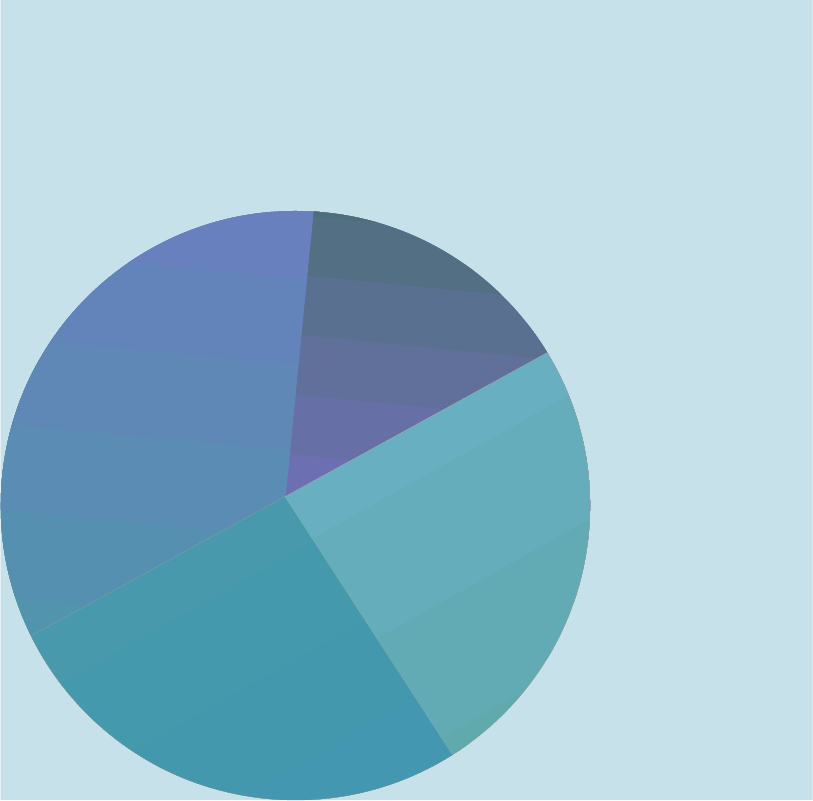January 28. The day Jane Austen’s Pride and Prejudice was first published in the United Kingdom. The date Elvis Presley made his first national television appearance in the United States. And most importantly for readers of this blog, January 28 is Data Privacy Day, the international day to empower people and businesses to respect privacy and build trust. But what is Data Privacy Day? How can you celebrate it? And what can you do to look after your own personal information online?
Blog
Your guide to celebrating Data Privacy Day
Educate, raise awareness... and celebrate! This is your guide to celebrating Data Privacy Day (with all the resources you need to help mark the occasion)
Robb Taylor-Hiscock
Senior Content Marketing Specialist, CIPP/E, CIPM
January 24, 2024

What is Data Privacy Day?
Data Privacy Day occurs annually on January 28. It’s an annual celebration of all things privacy and data protection was first introduced by the Council of Europe on April 26, 2006. Data Privacy Day is celebrated on January 28 each year to commemorate Convention 108 – the first legally binding international treaty on data protection signed in 1981. More recently, Data Privacy Day celebrations have extended to span a whole week or even the entire month of January, with the primary aim of raising awareness of privacy and data protection best practices.
The privacy landscape has changed markedly since the inception of Data Privacy Day back in 2007. We have seen wholesale changes to privacy legislation, new international frameworks adopted and struck down in the courts (and then amended, adopted, and struck down again… and then amended and adopted again), and a huge shift in public awareness of privacy. With each passing year, the privacy landscape becomes more complex. At times, navigating the online world can feel perilous – individuals and organizations must consider more requirements than ever before. That’s why Data Privacy Day represents such an important moment on the calendar for businesses and individuals alike to pause and take stock.
How Can I Celebrate Data Privacy Day?
There really isn’t one single way to celebrate Data Privacy Day but it is important that we all take a moment to recognize its significance and why privacy matters. For example, you might want to take just five minutes out of your day to read an article about what it really means when you ‘accept cookies’. Perhaps you want to spend some time on YouTube watching some privacy explainer videos or you really want to understand what ‘legitimate interest’ means. For organizations, Data Privacy Day can be a great opportunity to educate employees about the measures that are taken to ensure personal information is kept safe. It could also be a great moment to host a workshop explaining some best practices when it comes to protecting your own privacy. Or you may want to share some of the great work your privacy team has been doing to your customer base through an infographic or social media post. And, if you’re stuck for inspiration here are some more ways you can celebrate Data Privacy Day:
- Host an online event – This can be a great way for you to discuss what privacy means to your organization and show off to your customers and stakeholders that you take privacy seriously.
- Organize a privacy-related quiz – Looking to get friends or colleagues involved in some fun and engaging activities that will also educate them about privacy? Well, a short quiz is usually a pretty safe bet – especially if you’re offering a prize. Alternatively, you could simply share some interesting privacy trivia through email or instant messenger.
- Educate yourself – Benjamin Franklin once said, “an investment in knowledge pays the best interest.” Spending some time to get up to date with current privacy trends and hot topics might equip you with the thought-provoking knowledge you need to keep the conversation going.
What Can I Do to Protect My Own Online Privacy?
At OneTrust our mission is based upon helping organizations to become more trusted through operationalizing privacy best practices and ensuring personal information is protected to the highest standard and managed accordingly. However, there are some very simple things that you, as an individual, can do to take control of your own online privacy.
We all know that the internet can be a scary place at times. At every turn, you can be confronted by a potential scam or scheme to steal your personal information. Companies can track your behavior and, in some cases, even your location. You can strike up a decent conversation, only to discover you were messaging an AI-powered chat bot. So, it really does pay to arm yourself with a little knowledge to keep you and your browsing habits safe. Here are a few ways you can protect your personal privacy online:
- Limit the personal information you share on social media – Look, we get it. You want to share that perfectly lit photo of your expensive dinner from that hyper-exclusive restaurant. But limiting exactly what you share on social media can have a big impact on your personal privacy. If you do want to share certain information online, consider making use of the privacy settings on the website or even on the browser you are using.
- Don’t click links or open attachments from suspicious or unknown emails – It may sound obvious, but as we’ve shifted into a world with an added reliance on digitalization, phishing scams are at an all-time high – many of which are convincing and sophisticated. So, think twice before opening that attachment from someone you don’t know.
- Know your privacy rights and how to exercise them in your state or country – The Beastie Boys once told us we need to fight for our right to party. At OneTrust, we say you need to fight for your right to privacy. That starts with knowing your rights and how you can exercise them. Most modern privacy laws grant individuals the right to access the information a business holds on them and in many cases, there is also a right to request that information be erased.
- Opt-out of data collection by using universal preference signals – Universal preference signals may sound like scary tech jargon, but in actuality, they are commonplace and quite easy to use. In layman’s terms, universal preference signals allow you have greater control over how your information is used online and can be set up in only a few clicks through your browser settings.
Take a look at this infographic for more ways to maintain your privacy online – 14 ways to protect your own privacy
Taking privacy beyond Data Privacy Day
OneTrust regularly produces a range of resources for you to utilize and are another great way to understand the digital world we live in and how to navigate it. Check out the OneTrust Blog to read more about the latest trends in privacy and insight into trending news. Head over to the OneTrust Resources page, where you will find webinars, infographics, checklists, eBooks, and more to help you put your knowledge into practice. Or, if you are a podcast fan, checkout the latest episode of Trustonomy to learn more about the moments in history that have defined how trust is won and lost. Additionally, OneTrust DataGuidance offers a huge range of expert research materials that can help you gain an in-depth understanding of global privacy laws and hear from practicing privacy experts on how to deal with the latest and greatest topics in the privacy and data protection world.
Happy Data Privacy Day!
You may also like

eBook
Privacy Management
Your Data Privacy Day handbook
This guide give you a range of information and resources to raise privacy awareness this Data Privacy Day.
January 21, 2025

Webinar
Privacy Automation
Privacy automation 101: Simplifying data mapping and risk assessments
Join this webinar to learn how OneTrust helps you automate Data Mapping and Privacy Risk Assessments and how to overcome maintenance challenges.
September 25, 2024

Webinar
Data Discovery & Classification
Enhancing Data Governance: OneTrust and Snowflake strategies for data-driven businesses
Join us for a webinar with Jim Warner and Alex Cash to explore how Snowflake and OneTrust can revolutionize your data governance strategy, helping you maintain data quality, ensure compliance, and exceed marketing ROI in 2024.
September 24, 2024

Webinar
AI Governance
From policy to practice: Bringing your AI Governance program to life
Join our webinar to gain practical, real-world guidance from industry experts on implementing effective AI governance.
September 10, 2024

Webinar
AI Governance
Ensuring compliance and operational readiness under the EU AI Act
Join our webinar and learn about the EU AI Act's enforcement requirements and practical strategies for achieving compliance and operational readiness.
August 22, 2024

Webinar
Privacy Management
OneTrust Live: Unlocking the power of automation for privacy programs
Join us for a live demo where we will discuss the advanced capabilities of OneTrust solutions in data privacy enforcement, first-party data collection, and AI innovation.
August 21, 2024

Webinar
Cookie Consent
Unpacking Google's third-party cookies decision: What marketers need to know
Join our webinar to learn about Google's decision to keep third-party cookies and how it impacts marketers. Get actionable strategies and stay ahead in data privacy.
August 13, 2024

Webinar
Privacy Management
Preparing for child data protection laws in the US
Join DataGuidance and a panel of experts as we discuss US privacy laws the protection of minors' data.
August 07, 2024

Webinar
AI Governance
AI Governance in action: A live demo
Whether your AI is sourced from vendors and third parties or developed in-house, AI Governance supports informed decision-making and helps build trust in the responsible use of AI. Join the live demo webinar to watch OneTrust AI Governance in action.
August 06, 2024

Webinar
Privacy Management
CPRA in action: OneTrust Live Demo
Join us for a deep dive tour of our suite of technology solutions for operationalizing and automating CPRA requirements across Do Not Share, Consumer Rights and privacy governance operations.
August 01, 2024

Webinar
Consent & Preferences
The ultimate consent strategy for maximizing customer opt-ins in 2024
Discover the ultimate consent strategy for 2024! Watch our webinar to maximize customer opt-ins, optimize user experience, and maintain compliance.
July 30, 2024

eBook
Privacy Automation
Moving through the Data Privacy Maturity Model
Explore the Data Privacy Maturity Model to evolve your data privacy program from compliance-focused to a strategic, value-driven framework.
July 29, 2024

Webinar
Privacy Management
Going beyond CCPA
Join us for an in-depth webinar on "Going Beyond CCPA," where we will explore the intricacies of privacy laws, compare major regulations, and provide guidance on enhancing your privacy policy.
July 25, 2024

Webinar
Third-Party Risk
Third-Party AI: Procurement and risk management best practices
As innovation teams race to integrate AI into their products and services, new challenges arise for development teams leveraging third-party models. Join the webinar to gain insights on how to navigate AI vendors while mitigating third-party risks.
July 25, 2024

Webinar
Privacy Management
New European cyber laws: What you need to know
The EU has adopted several new Cyber Laws that will impact many businesses and will come into force over the next few months (in October in the case of NISD2) and require actions now. Join the webinar to learn about the latest cyber developments.
July 23, 2024

Resource Kit
Responsible AI
EU AI Act compliance resource kit
Download this resource kit to help you understand, navigate, and ensure compliance with the EU AI Act.
July 22, 2024

Webinar
Privacy Management
The evolution of CCPA
Join us for an insightful webinar on "The Evolution of CCPA" where we will delve into the latest amendments, understand their impact, and explore the new requirements and implications for businesses.
July 18, 2024

Webinar
Privacy Management
Mastering data privacy: Navigating CCPA, CPRA, and beyond
Mastering Data Privacy: Expert Guidance on CCPA, CPRA, GDPR Compliance, Privacy Policy Best Practices, and Live Demo Insights
July 18, 2024

Webinar
Privacy Management
OneTrust Live: Complying with US Privacy Laws Effective July 2024
Join us on July 17th for a live demo of OneTrust's solutions, providing you with practical tools and strategies to ensure your organization is compliant with both new and existing data privacy laws in the US.
July 17, 2024

Webinar
Privacy Management
The road to 50 states: Rhode Island joins the US privacy landscape with a new law
Rhode Island has become the 20th US State to pass a privacy law. On June 25, 2024, the Governor of Rhode Island transmitted the Data Transparency and Privacy Protection Act (RIDTPPA) without signature allowing the Act to become law. Join the webinar to learn more.
July 16, 2024

Webinar
Privacy Management
Unpacking the latest in APAC privacy trends and regulatory developments
Join DataGuidance and expert contributors for a webinar to unpack the latest developments and regulatory landscapes in the APAC region.
July 11, 2024

Webinar
Privacy Management
Preparing for the future of privacy in healthcare: Going beyond HIPAA compliance
Join us for a discussion on preparing your organization for healthcare privacy compliance that goes beyond HIPAA.
July 11, 2024

Webinar
AI Governance
From build to buy: Exploring common approaches to governing AI
In this webinar, we'll navigate the intricate landscape of AI Governance, offering guidance for organizations whether they're developing proprietary AI systems or procuring third-party solutions.
July 10, 2024

eBook
AI Governance
Navigating the ISO 42001 framework
Discover the ISO 42001 framework for ethical AI use, risk management, transparency, and continuous improvement. Download our guide for practical implementation steps.
July 03, 2024

Webinar
Consent & Preferences
How consent automation fuels omni-channel engagement & personalization
Discover how consent automation fuels omni-channel engagement across web, mobile, and CTV. Join us to learn effective cross-platform CMP strategies.
July 02, 2024

Webinar
Privacy Management
Scaling to new heights with AI Governance
Join OneTrust experts to learn about how to enforce responsible use policies and practice “shift-left” AI governance to reduce time-to-market.
June 25, 2024

Webinar
Consent & Preferences
Building customer trust: Unify consent across your tech stack
Discover the power of unified consent across your tech stack. Join our webinar for strategies to enhance compliance, trust, and customer engagement.
June 24, 2024

Webinar
AI Governance
AI Governance Leadership Webinar: Best Practices from IAPP AIGG with KPMG
Join out webinar to hear about the challenges and solutions in AI governance as discussed at the IAPP conference, featuring insights and learnings from our industry thought leadership panel.
June 18, 2024

Webinar
Privacy Management
The road to 50 states: Minnesota and Vermont join the US privacy landscape
In this webinar, OneTrust DataGuidance and expert contributors unpack the MCPA and VDPA, examining the requirements, exceptions, and practical implications of the legislations on the data controllers and processors.
June 17, 2024

Infographic
Privacy Management
Building consumer trust through privacy by design
Build consumer trust with Privacy by Design. Learn how embedding privacy can enhance compliance, security, and brand loyalty with our detailed infographic.
June 14, 2024

Infographic
Consent & Preferences
First-party data, programmatic ads, and what advertising holds in 2024
Uncover the future of advertising in 2024. Our infographic highlights the importance of first-party data for compliance, trust, and effective customer engagement.
June 13, 2024

Webinar
Third-Party Risk
Protecting your reputation: 3 ways a unified third-party management program can help
This webinar will show you how to develop strategies for assessing reputational risks as it relates to third parties and the impact of third-party relationships.
June 12, 2024

Webinar
Privacy Management
OneTrust Live: Revolutionizing Your Data Strategy with Enhanced Privacy and AI
Join us for a live demo showcasing the cutting-edge capabilities of OneTrust solutions in the realms of data privacy enforcement, first-party data collection, and AI innovation.
June 12, 2024

Infographic
Consent & Preferences
How consent and preferences fits into your organization
When looking at a consent and preferences solution, it’s tough to picture what it’ll look like in your marketing tech stack. Download our infographic to learn more.
June 12, 2024

Webinar
AI Governance
Colorado's Bill on AI: Protecting consumers in interactions with AI systems
Colorado has passed landmark legislation regulating the use of Artificial Intelligence (AI) Systems. In this webinar, our panel of experts will review best practices and practical recommendations for compliance with the new law.
June 11, 2024

Infographic
Consent & Preferences
How does OneTrust integrate with Salesforce Marketing Cloud?
Does your business use Salesforce Marketing Cloud? Learn more about how OneTrust Consent & Preferences can integrate with your system to maximize efficiency and value.
June 11, 2024

Infographic
Consent & Preferences
How does OneTrust integrate with HubSpot?
Does your business use HubSpot? Learn more about OneTrust Consent & Preferences can integrate and maximize efficiency and value.
June 11, 2024

Infographic
Consent & Preferences
How does OneTrust integrate with Marketo?
Does your business use Marketo? Learn more about how OneTrust Consent & Preference can integrate with Marketo to maximize efficiency and value.
June 11, 2024

Webinar
Privacy Management
From legislation to operation: How to prepare for the new wave of US Privacy laws
Prepare your organization for the new wave of US privacy laws.
June 06, 2024

Webinar
Data Discovery & Classification
Catch it live: See the all-new features in OneTrust's Spring Release and Post-TrustWeek recap
Join us as Ryan Karlin, Senior Director of Product Marketing highlights important updates from TrustWeek including an inside look into OneTrust's new platform features that make it easier for customers to activate data responsibly, surface and mitigate risk, and navigate the complex regulatory environment.
June 06, 2024

eBook
Privacy Management
Understanding data transfers under the GDPR ebook
In the ebook, we delve into the fallout from Schrems II and explore how organizations based in Europe can best navigate international data transfers under the GDPR.
June 05, 2024

Webinar
Trust Transformation
APAC: The evolution of OneTrust's partner program
This webinar will outline benefits and requirements of OneTrust's Partner Program, which will enable and reward OneTrust partners and alliances as they build differentiated practices and cultivate expertise.
June 05, 2024

Webinar
AI Governance
Governing data for AI
In this webinar, we’ll break down the AI development lifecycle and the key considerations for teams innovating with AI and ML technologies.
June 04, 2024

Webinar
Consent & Preferences
Unlocking customer insights: Enhancing marketing with first-party data
Discover strategies to leverage first-party data for targeted marketing, personalization, compliance, and customer engagement.
June 03, 2024

Webinar
Privacy Management
Unlocking data as a strategic asset
Learn how to enhance your privacy program maturity to deliver strategic business value with first-party data, create dynamic end-user experiences, and more.
May 29, 2024

Webinar
Trust Transformation
EMEA: The evolution of OneTrust's Partner Program
Join this webinar as the partner team provides an overview of our evolved Partner Program.
May 24, 2024

Webinar
Privacy Management
Preparing for a new regulation: Lesson learned from the GDPR businesses can apply to the EU AI act?
Join our panel of experts as we celebrate GDPR Anniversary and take a closer look at the relationship between the GDPR and AI Act.
May 23, 2024

Webinar
Privacy Management
DSAR Product Demo with Data Privacy Group
Join our webinar to learn the practical tips and use cases for automating DSAR requests.
May 21, 2024

Infographic
Comparing US state privacy law requirements
Download our infographic and compare the many US state privacy law requirements that have been enacted or will soon come into effect.
May 14, 2024

Webinar
Trust Transformation
Privacy and trust in action: Implementing best practices in today's privacy landscape
Join OneTrust and Red Clover to discuss how earning trust is the key strategic objective of a mature data privacy program.
May 14, 2024

Webinar
Trust Intelligence
AMER: The evolution of OneTrust’s partner program
Join our partner program webinar to learn about new benefits and requirements that will enable and reward OneTrust partners.
May 10, 2024

Report
AI Governance
Global AI Governance law and policy: Jurisdiction overviews
In this 5-part regulatory article series, OneTrust sponsored the IAPP to uncover the legal frameworks, policies, and historical context pertinent to AI governance across five jurisdictions: Singapore, Canada, the U.K., the U.S., and the EU.
May 08, 2024

Webinar
Privacy Management
Best practices for managing employee DSARs in the EU and UK
In this webinar, our panel of experts will explore best practices for managing common complexities experienced when managing DSARs in the EU and UK.
May 08, 2024

Webinar
AI Governance
Embedding trust by design across the AI lifecycle
In this webinar, we’ll look at the AI development lifecycle and key considerations for governing each phase.
May 07, 2024

eBook
Consent & Preferences
Consent management: How financial services firms build trust
How can financial services organizations benefit from a consent management solution? Download our eBook powered with Capco’s expertise today.
May 01, 2024

Webinar
Consent & Preferences
Direct marketing do's and don'ts: Addressing double opt-in requirements and recommendations
Join OneTrust DataGuidance and legal experts as we dive into the intricacies of double opt-in within the framework of EU marketing regulations.
April 30, 2024

Webinar
Privacy Management
Integrating privacy strategically into your business
Join this session to learn how to take your data privacy program to the next level by building upon your existing capabilities, automating core privacy workflows, and more.
April 24, 2024

Infographic
Privacy Management
US state privacy laws timeline
View our timeline to understand the progression of current US state privacy laws and key dates.
April 23, 2024

Webinar
Privacy Management
Federal US privacy bill on the horizon? Exploring the draft APRA & new state privacy legislation
Join OneTrust DataGuidance and expert contributors for an overview of the Kentucky Consumer Privacy Act (KCPA), Maryland's Senate Bill 0541, and the draft American Privacy Rights Act and explore how a federal bill could shape the US privacy landscape.
April 23, 2024

Video
Privacy Management
Navigating the data lifecycle with OneTrust Privacy & Data Governance
Explore how OneTrust solutions help you navigate the information lifecycle, ensure compliance, mitigate risks, and enhance data governance practices.
April 22, 2024

Webinar
AI Governance
Navigating AI policy in the US: Insights on the OMB Announcement
This webinar will provide insights for navigating the pivotal intersection of the newly announced OMB Policy and the broader regulatory landscape shaping AI governance in the United States. Join us as we unpack the implications of this landmark policy on federal agencies and its ripple effects across the AI ecosystem.
April 18, 2024

Webinar
AI Governance
Data privacy in the age of AI
In this webinar, we’ll discuss the evolution of privacy and data protection for AI technologies.
April 17, 2024

eBook
Privacy & Data Governance
Data governance across industries: Leveraging your organization's most valuable asset
Download our new eBook and learn how to leverage the value of data governance across industries, including financial services, healthcare, retail, and manufacturing.
April 17, 2024

Webinar
Privacy Management
April Privacy & Data Governance Cloud demo webinar
See how OneTrust's Privacy & Data Governance Cloud operationalizes regulatory compliance and helps ensure privacy and responsible data use.
April 17, 2024

Webinar
Consent & Preferences
Permission-Based Personalization: The Power of OneTrust and Adobe
Unlock the power of permission-based personalization with OneTrust and Adobe. Join us for insights into data governance and customer engagement strategies.
April 17, 2024

Resource Kit
AI Governance
OneTrust's journey to AI governance resource toolkit
What actually goes into setting up an AI governance program? Download this resource kit to learn how OneTrust is approaching our own AI governance, and our experience may help shape yours.
April 11, 2024

Webinar
Consent & Preferences
Build trust and honour customers privacy with OneTrust Consent & Preferences
Learn how OneTrust Universal Consent and Preference Management help give individuals control over their consent, preferences, and first-party data.
April 11, 2024

Resource Kit
Privacy Management
Privacy by Design resource kit
This resource kit offers a range of content to help you understand the concept of Privacy by Design and provide guidance on best practices for its successful implementation.
April 04, 2024

Interactive Tool
Privacy Management
OneTrust Data Privacy Maturity Model self-assessment
This self-assessment will help you to gauge the maturity of your privacy program and understand the areas the areas of improvement that can further mature your privacy operations.
April 01, 2024

Infographic
Consent & Preferences
FAQ on the deprecation of third-party cookies
Navigate the deprecation of third-party cookies with our informative infographic. Discover essential insights on transitioning to first-party data, the future without cookies, and the role of consent management.
March 29, 2024

Webinar
Consent & Preferences
3 predictions for the impacts of 3rd party cookie deprecation
Stay ahead of the curve! Gain insights into the impacts of third-party cookie deprecation & actionable strategies for marketing success. Watch now!
March 26, 2024

Webinar
Privacy Management
Building foundational data privacy compliance
Join this session to learn how to build a strong privacy foundation to achieve your compliance objectives and lay the groundwork for more strategic privacy programs.
March 26, 2024

Checklist
Privacy Management
Preparing to self-certify with the EU-US DPF checklist
Self-certify for the EU-US DPF framework and comply with its seven core principles with this checklist.
March 26, 2024

Webinar
Privacy Management
Spring into action! Navigating CPRA: Ensuring compliance and protecting privacy
Join us for an interactive webinar we dive into the CPRA, which will go into force on March 29th.
March 21, 2024

Webinar
Privacy Management
Navigating data privacy in 2024: Global regulatory updates & compliance strategies
Join our webinar for a comprehensive overview of the latest global data privacy regulations and updates impacting businesses in 2024 and how to prepare.
March 20, 2024

Webinar
Consent & Preferences
The unified consent strategy every marketer needs in 2024
Join us to master Unified Consent! Seamlessly integrate preferences across your tech stack, drive customer satisfaction, and boost revenue. Watch today!
March 19, 2024

Webinar
AI Governance
AI in (re)insurance: Balancing innovation and legal challenges
Learn the challenges AI technology poses for the (re)insurance industry and gain insights on balancing regulatory compliance with innovation.
March 14, 2024

Webinar
Privacy Management
Fintech, data protection, AI and risk management
Watch this session for insights and strategies on buiding a strong data protection program that empowers innovation and strengthens consumer trust.
March 13, 2024

Webinar
Privacy Management
Managing cybersecurity in financial services
Get the latest insights from global leaders in cybersecurity managment in this webinar from our Data Protection in Financial Services Week 2024 series.
March 12, 2024

Webinar
AI Governance
Government keynote: The state of AI in financial services
Join the first session for our Data Protection in Financial Services Week 2024 series where we discuss the current state of AI regulations in the EU.
March 11, 2024

Report
Data Discovery & Classification
The KuppingerCole Leadership Compass on Data Governance
OneTrust has been named a leader in the 2024 KuppingerCole Leadership Compass on Data Governance, receiving the highest rating for Product, Innovation, and Market.
March 08, 2024

White Paper
AI Governance
Getting started with AI governance: Practical steps and strategies
Download this white paper to explore key drivers of AI and the challenges organizations face in navigating them, ultimately providing practical steps and strategies for setting up your AI governance program.
March 08, 2024

Infographic
Data Discovery & Classification
OneTrust Privacy & Data Governance Cloud gains momentum with widespread industry recognition
OneTrust maintains its leading position in Privacy & Data Governance, with a record number of recognitions in the last six months from KuppingerCole and Forrester
March 07, 2024

eBook
Privacy Management
Preparing to self-certify with the EU-US DPF
The EU-US DPF represents an important mechanism for US-based companies to lawfully transfer personal data form the EU to the US. Use this eBook to learn more about how to self-certify with the framework and its seven core principles.
March 07, 2024

Webinar
AI Governance
Revisiting IAPP DPI Conference – Key global trends and their impact on the UK
Join OneTrust and PA Consulting as they discuss key global trends and their impact on the UK, reflecting on the topics from IAPP DPI London.
March 06, 2024

Webinar
AI Governance
AI regulations in North America
In this webinar, we’ll discuss key updates and drivers for AI policy in the US; examining actions being taken by the White House, FTC, NIST, and the individual states.
March 05, 2024

Webinar
Privacy & Data Governance
Unlocking value through responsible use of data
Learn about the data privacy maturity model and how your privacy teams can move beyond compliance to become strategic enablers for their business.
February 28, 2024

Infographic
Data Discovery & Classification
Data governance in manufacturing: Challenges and use cases
Learn the impact a data governance program has in manufacturing and how it enables greater efficiency across your supply chain
February 26, 2024

eBook
Privacy Management
Quebec's Law 25: What the CPO wants the CTO to know
Quebec’s Law 25 is a major legislative development in Canadian privacy that will have a significant effect on IT systems. Learn more about what the CPO wants the CTO to know.
February 26, 2024

In-Person Event
Responsible AI
Data Dialogues: Implementing Responsible AI
Learn how privacy, GRC, and data professionals can assess AI risk, ensure transparency, and enhance explainability in the deployment of AI and ML technologies.
February 23, 2024

Infographic
Data Discovery & Classification
What to look for in a data discovery solution
Make sure you choose the right data discovery solution for your organization with our comprehensive breakdown of key benefits and features to look for.
February 20, 2024

Webinar
Consent & Preferences
Achieving compliance excellence: Your path to marketing success
Unlock marketing success with a comprehensive CMP. Deliver tailored user experiences and maintain compliance across web, mobile, and CTV. Watch now!
February 15, 2024

Webinar
AI Governance
Global trends shaping the AI landscape: What to expect
In this webinar, OneTrust DataGuidance and experts will examine global developments related to AI, highlighting key regulatory trends and themes that can be expected in 2024.
February 13, 2024

Infographic
Data Discovery & Classification
Data governance in retail: Challenges and use cases
Learn how data governance can help manage the high volume and sensitivity of data that runs through your retail operations.
February 12, 2024

Infographic
Data Discovery & Classification
Data governance in healthcare: Challenges and use cases
Learn how data governance can help your healthcare organization effectively manage its protected health information (PHI) and other sensitive data.
February 08, 2024

Infographic
Privacy Management
OneTrust named a leader in The Forrester Wave™: Privacy Management Software, Q4 2023 report
See why OneTrust was named a Leader in The Forrester Wave™: Privacy Management Software, Q4 2023 report.
February 07, 2024

eBook
Privacy Management
Understanding the Data Privacy Maturity Model
Data privacy is a journey that has evolved from a regulatory compliance initiative to a customer trust imperative. This eBook provides an in-depth look at the Data Privacy Maturity Model and how the business value of a data privacy program can realised as it matures.
February 07, 2024

Webinar
AI Governance
The EU AI Act
In this webinar, we’ll break down the four levels of AI risk under the AI Act, discuss legal requirements for deployers and providers of AI systems, and so much more.
February 06, 2024

Data Sheet
Privacy Automation
An overview of the Data Privacy Maturity Model
Data privacy is evolving from a regulatory compliance initiative to a customer trust imperative. This data sheet outlines the four stages of the Data Privacy Maturity Model to help you navigate this shift.
February 05, 2024

Webinar
Responsible AI
Preparing for the EU AI Act: Part 2
Join Sidley and OneTrust DataGuidance for a reactionary webinar to unpack the recently published, near-final text of the EU AI Act.
February 05, 2024

Webinar
Privacy Management
The road to 50 states: New Jersey and New Hampshire join the US privacy landscape
oin OneTrust DataGuidance for a webinar highlighting the key requirements within the new US laws, New Jersey Senate Bill 332 and New Hampshire Senate Bill 255.
February 01, 2024

Webinar
Privacy Management
Data Privacy Day 2024: Reflecting on the past year and anticipating the next
Join our panel of expert privacy professionals as they dissect the key happenings in 2023 and how privacy professionals can approach what may occur in 2024.
January 31, 2024

Checklist
AI Governance
Questions to add to existing vendor assessments for AI
Managing third-party risk is a critical part of AI governance, but you don’t have to start from scratch. Use these questions to adapt your existing vendor assessments to be used for AI.
January 31, 2024

Webinar
AI Governance
Getting started with AI Governance
In this webinar we’ll look at the AI Governance landscape, key trends and challenges, and preview topics we’ll dive into throughout this masterclass.
January 16, 2024

Infographic
Data Discovery & Classification
Data governance in financial services: Challenges and use cases
Learn how data governance can help address common challenges in the financial services industry and protect your most critical information.
January 12, 2024

Webinar
AI Governance
First Annual Generative AI Survey: Business Rewards vs. Security Risks Panel Discussion
OneTrust sponsored the first annual Generative AI survey, published by ISMG, and this webinar breaks down the key findings of the survey’s results.
January 12, 2024

Webinar
Privacy Automation
Embedding Privacy by Design through PIA Automation
Join us for a webinar on Embedding Privacy by Design through PIA Automation.
January 11, 2024

Infographic
Consent & Preferences
Unify consented data across your tech stack
How does consented data help the rest of your tech stack level up? And what does this mean for your customers? Find out the answers and more with this infographic.
January 11, 2024

Report
AI Governance
ISMG's First annual generative AI study - Business rewards vs. security risks: Research report
OneTrust sponsored the first annual ISMG generative AI survey: Business rewards vs. security risks.
January 04, 2024

Webinar
AI Governance
Building your AI inventory: Strategies for evolving privacy and risk management programs
In this webinar, we’ll talk about setting up an AI registry, assessing AI systems and their components for risk, and unpack strategies to avoid the pitfalls of repurposing records of processing to manage AI systems and address their unique risks.
December 19, 2023

Webinar
Consent & Preferences
Permission-based Personalization: The Power of a Centralized Record of Consent
Join us to explore the power of consent record centralization and its impact on elevating customer personalization while respecting privacy.
December 18, 2023

Report
Privacy Management
The Forrester Wave™: Privacy Management Software, Q4 2023
Download the report see why OneTrust is named a leader in The Forrester Wave™: Privacy Management Software, Q4 2023 Report.
December 14, 2023

Webinar
Responsible AI
Preparing for the EU AI Act
Join Sidley and OneTrust DataGuidance for a reactionary webinar on the EU AI Act.
December 14, 2023

Infographic
Consent & Preferences
The consent and preferences roadmap
How can your organization get started with consent and preferences? What are the first steps to take? Download our infographic to learn more.
December 11, 2023

Report
Trust Intelligence
Trending Toward Trust in 2024: Measurement, management, and maturity
Trending Toward Trust in 2024 highlights some of the biggest industry drivers for organizations on their trust transformation journeys. Take a glimpse at what’s in store in 2024 with this infographic.
December 08, 2023

Infographic
Privacy Management
OneTrust announces partnership with Europrivacy
Learn how OneTrust and Europrivacy's partnership can help your organization achieve GDPR compliance and build trust with your customers.
December 06, 2023

Webinar
Privacy Management
Automating fulfillment of subject rights requests in the US
Learn how Privacy Rights Automation helps to fully automate privacy rights requests.
December 06, 2023

Webinar
Privacy Management
Live Demo: How to holistically manage data transfers and data sharing requirements
Live demo of the OneTrust Privacy Cloud, exploring how to manage Data Transfers, perform TIAs, and enforce consumer opt-out of the sale/share of personal data.
December 05, 2023

Webinar
Consent & Preferences
Marketing Panel: Balance privacy and personalization with first-party data strategies
Join this on-demand session to learn how you can leverage first-party data strategies to achieve both privacy and personalization in your marketing efforts.
December 04, 2023

Webinar
AI Governance
Revisiting IAPP DPC: Top trends from IAPP's privacy conference in Brussels
Join OneTrust and KPMG webinar to learn more about the top trends from this year’s IAPP Europe DPC.
November 28, 2023

Webinar
Consent & Preferences
The latest on consent-driven advertising: TCF 2.2, GPP, GCM and beyond
Unlock cutting-edge advertising trends: TCF 2.2, GPP, GCM and more! Join to master consent strategies in 2024 and beyond.
November 27, 2023

eBook
AI Governance
Navigating the EU AI Act
With the use of AI proliferating at an exponential rate, the EU rolled out a comprehensive, industry-agnostic regulation that looks to minimize AI’s risk while maximizing its potential.
November 17, 2023

White Paper
Responsible AI
EU AI Act Conformity Assessment: A step-by-step guide
Conformity Assessments are a key and overarching accountability tool introduced by the EU AI Act. Download the guide to learn more about the Act, Conformity Assessments, and how to perform one.
November 17, 2023

Infographic
Responsible AI
EU AI Act Conformity Assessment: A step-by-step guide
A Conformity Assessment is the process of verifying and/or demonstrating that a “high- risk AI system” complies with the requirements of the EU AI Act. Download the infographic for a step-by-step guide to perform one.
November 17, 2023

Webinar
Privacy Management
December's deadline: Ensuring compliance with Utah's privacy regulation
Join us for a webinar as we explore the impending implementation of the Utah Privacy Law, set to take effect on December 31, 2023.
November 14, 2023

Webinar
Responsible AI
OneTrust AI Governance: Championing responsible AI adoption begins here
Join this webinar demonstrating how OneTrust AI Governance can equip your organization to manage AI systems and mitigate risk to demonstrate trust.
November 14, 2023

eBook
Privacy Management
Data privacy and data protection: The basics explained
Whether you’re new to privacy or have been working in the space for some time, it can be a confusing place. In this eBook we explain the basics.
November 01, 2023

Webinar
Privacy Management
Managing data transfers within the UK & EU
Join our experts as we discuss ways to effectively manage data transfers between the UK & EU while staying compliant with the latest privacy regulations.
October 31, 2023

Webinar
Trust Intelligence
The state of trust: OneTrust's benchmarking survey release
Join our webinar to discuss the results of OneTrust’s State of Trust Benchmarking survey, to see how industry peers are defining trust and actioning against it.
October 31, 2023

White Paper
AI Governance
AI playbook: An actionable guide
What are your obligations as a business when it comes to AI? Are you using it responsibly? Learn more about how to go about establishing an AI governance team.
October 31, 2023

Infographic
Privacy Management
The principles of the EU-US DPF
The EU-US Data Privacy Framework is based upon seven core principles that organizations must comply with to certify with the framework.
October 30, 2023

Webinar
Data Discovery & Security
A guided tour of OneTrust Data Discovery magic
Our expert speaker will demonstrate how common real-world data challenges can be identified, addressed, and reported on, leading to better data governance, security, and alignment with business goals.
October 26, 2023

Webinar
Privacy Management
Revisiting the ICO Data Protection Practitioner's Conference: Addressing your top challenges
Join OneTrust and KPMG UK to discuss the challenges of employee SARs, managing your breach response with third parties, and incident management.
October 25, 2023

Webinar
Consent & Preferences
How to activate data confidently with unified consent management
Join us to learn how to harmonize data for responsible use, leverage first-party data, and ensure your data architecture with a proactive consent strategy to build customer trust.
October 24, 2023

Webinar
Data Discovery & Security
Data minimization and risk assessment in data discovery
Explore the concept of data minimization and its crucial role in enhancing security, privacy, and reducing risk.
October 19, 2023

Webinar
Privacy Management
Embedding privacy by design to enforce responsible use of data
In this webinar, we explore the latest in Privacy by Design standards and how to effectively manage the balance between Privacy and Data Governance.
October 18, 2023

Webinar
Data Discovery & Security
Data Discovery Dispelled: Data's dark corners
Join the first part of our Data Discovery Dispelled webinar series where we will discuss the hidden sensitive information that could pose risks for your organization.
October 12, 2023

Webinar
Data Discovery & Security
Data Discovery Dispelled: Unmasking the mysteries of data
Join us for a journey into the heart of data management as we explore the depths of data within organizations and shed light on how technology can enhance data security, privacy, and compliance.
October 12, 2023

Webinar
Consent & Preferences
Compliant omni-channel automation: How to be a responsible marketer?
Join this webinar and learn how to create a compliant privacy-first marketing program that respects customer consent across multiple channels.
October 12, 2023

Webinar
The Shifting US Privacy Landscape: Lessons learned from enforcement actions and emerging trends
Stay ahead of US privacy laws as we explore the lessons learned from CCPA and FTC enforcement and how AI is effecting the regulatory landscape.
October 12, 2023

Webinar
Privacy Management
The Finalization of the UK-U.S. Data Bridge
A webinar discussion of significant points and implications of the new UK-US Data Bridge.
October 10, 2023

Infographic
Consent & Preferences
How OneTrust integrates with Snowflake
When it comes to personalized marketing campaigns, email lists, or any other activation, make sure you’re staying compliant with all applicable privacy regulations.
October 09, 2023

Infographic
AI Governance
The Road to AI Governance: How to get started
AI Governance is a huge initiative to get started with for your organization. From data mapping your AI inventory to revising assessments of AI systems, put your team in a position to ensure responsible AI use across all departments.
October 06, 2023

White Paper
AI Governance
How to develop an AI governance program
Download this white paper to learn how your organization can develop an AI governance team to carry out responsible AI use in all use cases.
October 06, 2023

Resource Kit
Consent & Preferences
The IAB TCF 2.2 mastery toolkit
Master IAB TCF 2.2: Gain insights, navigate changes, and empower your organization with our resource kit. Download now!
October 05, 2023

Webinar
Consent & Preferences
Honoring consent throughout the data lifecycle
Watch our webinar and learn how consent can enrich your data while helping you build a brand your customers can trust.
October 03, 2023

eBook
Privacy Management
A look at processing principles under the GDPR, CCPA, and the EU-US DPF
Download this ebook to understand the principles of the GDPR, CCPA (as amended), and the EU-US DPF and to compare their similarities and differences.
October 02, 2023

Webinar
Privacy Management
Privacy in practice: DSAR with PA Consulting
Join OneTrust and PA Consulting as we deep dive into the latest ICO requirements on SARs, handling DSARs, and the benefits of automation.
September 28, 2023

Resource Kit
Consent & Preferences
The Google CMP requirements toolkit
Master Google's CMP Standards: Stay compliant and excel in the evolving ad landscape. Download our Google CMP Requirements Toolkit now!
September 27, 2023

Infographic
Privacy & Data Governance
Understanding the EU Data Boundary
Download our free infographic and get the information you need to understand the EU Data Boundary and how to properly handle data in the European Union.
September 22, 2023

Webinar
Privacy Management
Privacy in practice: PIA & DPIA with PA Consulting
Join OneTrust and PA Consulting as we discuss what makes an effective PIA, best practices, and the benefits of automation.
September 21, 2023

Data Sheet
Data Discovery & Security
Data Discovery and Security
Explore our OneTrust Data Discovery and Security data sheet to learn how you can discover and control your data while enabling your teams.
September 18, 2023

Webinar
Privacy Management
The road to privacy compliance: A spotlight on Oregon & Delaware legislation
We explore the new Oregon and Delaware privacy laws, how they differ from other US privacy laws, and what they mean for your business.
September 14, 2023

Webinar
Privacy & Data Governance
Privacy in practice for data mapping: With PA Consulting and Syngenta
Join OneTrust and panelists from PA Consulting and Syngenta as we explore practical ways to build an effective data mapping program, best practices, and the need for automation.
September 14, 2023

Infographic
Privacy Automation
The ROI of privacy notice management infographic
Download this infographic and see the ROI benefits of privacy notice management automation with OneTrust Privacy Notice Management.
September 05, 2023

Regulation Book
Privacy Management
Utah Consumer Privacy Act law book
Download the Utah Consumer Privacy Act law book and have the official UCPA text at your fingertips for when the law takes effect on December 31, 2023.
September 04, 2023

Webinar
Consent & Preferences
Adobe + OneTrust: How to market responsibly with consent-based experiences
Join Adobe and OneTrust as we discuss best practices for deploying consent-based marketing campaigns and privacy-first experiences.
August 29, 2023

eBook
Privacy Management
Responsible data use: Navigating privacy in the information lifecycle eBook
Download this eBook and get the insights you need to safeguard customer privacy and ensure responsible data use in the information lifecycle.
August 22, 2023

Webinar
Privacy Management
August Privacy & Data Governance Cloud Demo Webinar
See how OneTrust's Privacy & Data Governance Cloud operationalizes regulatory compliance and helps ensure privacy and responsible data use.
August 16, 2023

eBook
Data Discovery & Classification
Ultimate guide to building a data governance program
Download this eBook and learn practical methods in building a flexible data governance program that aligns with your business.
August 14, 2023

Blog
Privacy Management
The road to 50 states: Delaware and Oregon join the US privacy landscape
Get in-depth analysis on two upcoming US Privacy laws, the Oregon Consumer Privacy Act (OCPA) and the Delaware Personal Data Privacy Act (DPDPA), with OneTrust DataGuidence and a panel of experts.
August 10, 2023

eBook
Responsible AI
AI Chatbots: Your questions answered
We answer your questions about AI and chatbot privacy concerns and how it is changing the global regulatory landscape.
August 08, 2023

Webinar
Cookie Consent
Trust matters: Building consumer confidence in a cookieless world
Join us and learn how to build consumer trust and drive marketing ROI without relying on third-party cookies.
August 01, 2023

Webinar
Consent & Preferences
Consent-based advertising: Connecting with customers in a privacy-centric world
Get the insights you need to launch privacy-first advertising campaigns and build strong customer relationships based on trust.
July 28, 2023

Webinar
Consent & Preferences
Master IAB TCF 2.2: Navigate the latest changes in user consent management
Keep up to date with the latest IAB TCF 2.2 changes and learn what you need to know to keep your organization privacy-first and complaint.
July 27, 2023

eBook
Privacy Management
EU-US Data Privacy Framework: Your questions answered
What you need to know about the new EU-US Data Privacy Framework and international data transfers.
July 26, 2023

Webinar
Consent & Preferences
Tackling privacy and personalization: Fireside chat with PwC and the NFL
Our expert panel looks at how consent and preference management empowers consumers, creates engaging custom experiences, and helps companies comply with global regulations.
July 20, 2023

Webinar
Privacy Management
Managing data transfers
Register for this free webinar to learn how to effectively manage international data transfers in the wake of Schrems II.
July 18, 2023

Webinar
Privacy Management
The finalization of the EU-US Data Privacy Framework
Join us for an expert panel as we discuss the finalized EU-US Data Policy Framework and what it means for organizations managing international data transfers.
July 13, 2023

Resource Kit
Privacy & Data Governance
US privacy resource kit
Download our US privacy resource kit designed to access a range of materials to help you understand how the US privacy landscape is evolving.
July 13, 2023

Webinar
Consent & Preferences
Consent-driven advertising: How successful organizations deliver personalized experiences with first-party data
Gain practical tips on collecting, managing, and using first-party data to deliver personalized experiences that prioritize user consent. Watch now!
July 12, 2023

Webinar
Responsible AI
Unpacking the EU AI Act and its impact on the UK
Prepare your business for EU AI Act and its impact on the UK with this expert webinar. We explore the Act's key points and requirements, building an AI compliance program, and staying ahead of the rapidly changing AI regulatory landscape.
July 12, 2023

Webinar
Privacy Management
Now in effect: Colorado and Connecticut privacy laws
In this free webinar, our privacy experts delve into the new Colorado and Connecticut privacy laws and how they differ from other US state regulations.
July 12, 2023

Checklist
Consent & Preferences
The marketer's first-party data checklist
Download our in-depth first-party data checklist and begin building privacy-first marketing strategy that builds trust and keeps your organization compliant.
July 11, 2023

Infographic
Governance & Policy Management
The 6 principles of data responsibility
Download the infographic to learn more about the 6 guiding principles for data responsibility and why it is crucial that you follow them.
July 11, 2023

eBook
Privacy Management
The 7 principles of Privacy by Design
Learn about the seven fundamental principles of Privacy by Design and how to apply them to your business.
July 10, 2023

Webinar
Consent & Preferences
Live demo: How to automate consent and preference management with OneTrust
In this webinar, we demonstrate how OneTrust Consent and Preferences helps build stronger customer relationships by providing transparency, giving users control over their data use, and delivering personalized experiences.
June 29, 2023

Webinar
Privacy Management
Unpacking the EU-US DPF
In this webinar, we cover the new EU-US Data Privacy Framework (EU-US DPF) and what privacy program managers need to know for post-Schrems II data transfers.
June 28, 2023

Webinar
Consent & Preferences
Consent-based marketing: bringing privacy and consent to your tech stack
Learn how focusing on first-party data and end-to-end consent can help drive innovation and trust with this on-demand webinar with Engage Business Media.
June 28, 2023

Webinar
Consent & Preferences
Consent-driven advertising: What to know about Google's new CMP requirements
Join us for this expert webinar as we delve into Google's new CMP requirements for ads and best practices for permission-based advertising.
June 27, 2023

Video
Third-Party Risk
Third-party management demo
See how OneTrust's third-party management solution can help scale your third-party lifecycle and evaluate vendors with real-time risk intelligence.
June 27, 2023

Webinar
Responsible AI
AI, chatbots and beyond: Combating the data privacy risks
Prepare for AI data privacy and security risks with our expert webinar. We will delve into the evolving technology and how to ensure ethical use and regulatory compliance.
June 27, 2023

Webinar
Data Discovery & Classification
Live demo: OneTrust Data Discovery
See how OneTrust Data Discovery can help your organization achieve complete data visibility to empower your security program and reduce risk.
June 23, 2023

Webinar
Data Discovery & Classification
Data responsibility: The information security professional’s higher purpose
Join OneTrust and KPMG for a dialogue with Information Security leaders on managing the balance between risk and reward when handling sensitive customer information.
June 20, 2023

Infographic
Consent & Preferences
Navigating Google's new CMP requirements
Adapt to Google's June 2023 CMP requirements with this infographic and confidently engage your audience while staying compliant.
June 20, 2023

Webinar
Privacy Management
New states, new dates: Preparing for Indiana, Montana, Tennessee and Florida state privacy laws
Join our expert panel where we examine upcoming privacy legislation in Indiana, Montana, Tennessee, and Florida and the key requirements of each law.
June 20, 2023

Checklist
Privacy Management
The Revised FADP: 7 steps toward preparedness
Prepare for Switzerland’s Revised Federal Act on Data Protection (Revised FADP) when it comes into force on September 1, 2023 with our free compliance checklist.
June 15, 2023

Webinar
Privacy Automation
US privacy laws on the horizon: Which states will be next?
Join our live webinar as OneTrust DataGuidence and privacy experts examine new privacy legislation in Indiana, Montana, Tennessee, Florida, and Texas.
June 15, 2023

Webinar
Privacy & Data Governance
Privacy & Data Governance monthly demo webinar - June 2023
See a live demo of OneTrust's Privacy & Data Governance Cloud and how it helps operationalize regulatory compliance and enable trusted data use.
June 14, 2023

Webinar
Data Discovery & Classification
OneTrust Data Discovery Day: A deep dive into automating data discovery and classification
Join us for a two-hour deep dive into data discovery and how OneTrust helps privacy, IT, and security teams understaind their data and achieve risk reduction goals.
June 13, 2023

Infographic
Data Discovery & Classification
How OneTrust Data Discovery integrates with Microsoft 365
Explore three key integration capabilities of OneTrust Data Discovery and Microsoft 365.
June 13, 2023 3 min read

Infographic
Consent & Preferences
How OneTrust Consent and Preferences integrates with Adobe Experience Platform
Explore five key integration capabilities of OneTrust Consent and Preferences and Adobe Experience Platform.
June 13, 2023 3 min read

Webinar
Privacy Management
Vietnam PDPD: What you need to know
Join our expert webinar as we discuss the Vietnam PDPD, its key requirements, and how your organization should prepare for its July 1, 2023 effective date.
June 06, 2023

Webinar
Privacy Management
Orchestrate data retention & minimization for compliance with US state privacy laws
Join this interactive webinar to learn how OneTrust helps orchestrate data retention and minimization for compliance with US privacy laws.
June 06, 2023

Webinar
Privacy Management
Staying compliant: How to manage data transfers around the globe
In this webinar, we look at the subject of internation data transfers and how to effectively navigate regional laws and mitigate the risk of non-compliance.
June 06, 2023

Video
Consent & Preferences
The strongest consumer relationships are built on first-party data, not third-party cookies
Request a OneTrust Consent & Preferences demo video and learn how to unlock the potential of first-party data and establish a relationship with your customers based on trust.
June 02, 2023

eBook
Consent & Preferences
The ultimate guide to consent and preferences for marketers
Download this eBook and learn how marketers can apply consent and preference principles to build a relationship with their audience built on trust.
June 02, 2023

Infographic
Privacy Automation
The ROI of DSAR automation
Learn how DSAR automation streamlines privacy rights requests and saves your organization time and resources.
June 01, 2023

Webinar
Privacy Management
EU-US data transfers: Breaking down DPC’s Meta decision
Join us for this webinar as we break down the May 22, 2023 DPC Meta decision and cover the key takaways for EU-US data transfers.
June 01, 2023

Regulation Book
Privacy Management
Colorado Privacy Act law book
The Colorado Privacy Act (CPA) comes into force on July 1. Get the law's official text right at your fingertips.
May 30, 2023

eBook
Privacy Management
Connecticut Data Privacy Act law book
Get the complete text of the Connecticut Data Privacy Act (CTDPA) for your reference.
May 30, 2023

Webinar
AI Governance
The EU's AI Act and developing an AI compliance program
Join Sidley and OneTrust DataGuidence as we discuss the proposed EU AI Act, the systems and organizations that it covers, and how to stay ahead of upcoming AI regulations.
May 30, 2023

Report
Privacy & Data Governance
Gartner® Innovation Insights: Data Security Posture Management (DSPM)
Read this report from Gartner® that highlights some of the key capabilities needed in a DSPM.
May 30, 2023

Webinar
Privacy Management
Saudi Arabia's PDPL latest amendments: Are you ready?
Join OneTrust and Deloitte Middle East as we cover the latest changes to Saudia Arabia's Personal Data Protection Law (PDPL) and what it means for organizations in the KSA region.
May 30, 2023

Infographic
Privacy & Data Governance
The 3 priorities of the French DPO: Gain visibility, take action, automate
Download our infographic and learn about the 3 priorities of the French DPO.
May 30, 2023

Webinar
Privacy Management
GDPR turns 5: Celebrating data protection
Northern Europe panel - Join our panel of experts as they recap the GDPR, its key concepts, and what it means for organizations and compliance.
May 25, 2023

Webinar
Privacy Management
Global Panel — GDPR & Tech: Key considerations of Privacy by Design and AI in tech
Join our panel of experts as we discuss the impact GDPR had on the tech industry during the past five years, the importance of privacy by design, and what to expect with AI and regulation.
May 25, 2023

Webinar
Trust Intelligence
How the Onetrust platform is innovating to unlock the value of trust
Join this webinar to learn how OneTrust is enhancing its privacy management, data governance, and consent and preferences solutions to help organizations tackle data sprawl and enable regulatory agility.
May 24, 2023

Webinar
Privacy & Data Governance
Global Panel — GDPR & Healthcare: current regulatory guidance and enforcement
In this live webinar, our expert panel examines the first five years of the GDPR, how it changed the healthcare industry, and the changing global regulatory landscape.
May 24, 2023

Infographic
Privacy Management
Comparing the FADP, Revised FADP, and the GDPR
Download our infographic to see how the Revised FADP compares with its original version and the GDPR.
May 23, 2023

Webinar
Privacy Management
Global Panel — GDPR & Retail: building customer loyalty and trust with consent and privacy
Join us for a live panel as we discuss GDPR's impact on the retail and eCommerce industry and how companies evolved to meet the global regulatory landscape.
May 23, 2023

eBook
Privacy Management
Getting started with GDPR compliance
This eBook covers the fundamental information you need to know in order to get your GDPR compliance program started and how OneTrust helps.
May 23, 2023

Webinar
Privacy Management
Global Panel — GDPR & Finance: Staying ahead of the regulatory and cyber landscape
How has the GDPR affected the financial industry? Join our live panel as we examine how it companies evolved to meet the regulatory challenges and what can be done to stay ahead of the curve.
May 22, 2023

Resource Kit
Consent & Preferences
OneTrust at Gartner Marketing Symposium 2023
Dive into our exclusive resources from the 2023 Gartner Marketing Symposium here, in our exclusive resource: the Consent-Based Marketing: A Marketer's 2023 Toolkit.
May 19, 2023

Webinar
Privacy Management
Understanding Washington's My Health My Data Act
The Washington My Health My Data Act was signed into law on April 27, 2023 and will be enacted the following year. Join OneTrust DataGuidance and a team of legal experts and get the knowledge you need for compliance.
May 18, 2023

Infographic
Privacy Management
Comparing Canada's privacy laws infographic
Download this infographic to compare provisions in Alberta, British Colombia, and Quebec with those found at a federal level in PIPEDA and those proposed under the Consumer Privacy Protection Act.
May 18, 2023

Webinar
Privacy & Data Governance
OneTrust & Tealium: Closing the compliance gap with consent enforcement
In this webinar, we take a deep dive into how the OneTrust and Tealium partnership helps deliver more personalized experiences while ensuring consent and trust.
May 18, 2023

Infographic
Privacy Management
Top tips for Law 25 compliance
Download this infographic to learn more about Law 25’s provisions, their effective dates, and what you can do for compliance.
May 18, 2023

Webinar
Data Discovery & Classification
Monitoring least privilege access risks
Understand common scenarios for applying data access governance within your business and key considerations for evaluating open access risk.
May 18, 2023

Webinar
Privacy & Data Governance
Privacy & Data Governance monthly demo webinar - May 2023
Join us for a live demo of OneTrust's OneTrust’s Privacy & Data Governance Cloud and discover how to operationalize regulatory compliance and enable trusted data use.
May 17, 2023

Webinar
Privacy & Data Governance
Operationalizing the Iowa Consumer Data Protection Act
Join the Privacy experts at OneTrust for an update on the new law and learn key requirements of Iowa’s new privacy law and more.
May 16, 2023

White Paper
AI Governance
Data protection and fairness in AI-driven automated data processing applications: A regulatory overview
With AI systems impacting our lives more than ever before, it's crucial that businesses understand their legal obligations and responsible AI practices.
May 15, 2023

Webinar
Privacy Management
Operationalizing employee privacy for CPRA compliance
Join this interactive webinar to learn how OneTrust helps to operationalize employee privacy for the California Privacy Rights Act (CPRA) compliance.
May 10, 2023

In-Person Event
Privacy & Data Governance
Privacy in practice
Join us for a deep dive into embedding privacy by design into the fabric of your business to promote the responsible use of data.
May 09, 2023

Webinar
Third-Party Risk
Save time, save money: A practical guide to automating third-party risk management
In this webinar, you will learn how to reduce the use of spreadsheets for third-party risk management and cut costs when building your TPRM program.
May 03, 2023

White Paper
AI Governance
Navigating responsible AI: A privacy professional's guide
Download our white paper and learn how privacy teams help organizations establish and implement policies that ensure AI applications are responsible and ethical.
May 03, 2023

Blog
Privacy & Data Governance
Comparing US privacy law exemptions infographic
Learn how to navigate the new US privacy law exemptions and see how they compare.
May 01, 2023

Webinar
Data Discovery & Classification
Orchestrating data retention & deletion to reduce ROT data
Learn how organizations who orchestrate data retention not only satisfy retention requirements, but also reduce data sprawl and breach risk.
April 27, 2023

Webinar
Privacy Automation
Bridging borders: How to manage international data transfers
This session will cover the regulatory landscape, TIA guidance, and mitigation measures for international data transfers in the wake of the Schrems II case.
April 19, 2023 1 min read

Webinar
Privacy & Data Governance
Automate subject rights requests for compliance with US state privacy laws
Join this interactive webinar to learn how OneTrust Privacy Rights Automation helps you to fully automate privacy rights requests for your organization.
April 19, 2023

Infographic
Consent & Preferences
Global consent management requirements
As global privacy laws evolve, you'll need to ensure that your company honors customers' consent in each jurisdiction. Download our global consent managment infographic to learn more about staying compliant and optimizing your CMP.
April 14, 2023

In-Person Event
Consent & Preferences
Privacy-first marketing roadshow
Join these privacy-first marketing events to learn how to build strong brand-consumer relationships with consent-driven advertising and first-party data.
April 13, 2023

Webinar
Data Discovery & Classification
De-Risking data with visibility & classification
Join this interactive webinar to learn how Data Discovery helps information security teams gain visibility into risky data and prioritize investments.
April 11, 2023

In-Person Event
Third-Party Risk
Risk on the Road: Navigating data management, compliance automation and third-party risk
Join this OneTrust live event series, which will address critical topics such as navigating data management, compliance automation and third-party risk.
April 11, 2023

Webinar
Privacy & Data Governance
Iowa joins US privacy landscape with a new law
OneTrust DataGuidance’s webinar discusses Iowa’s CDPA, its similarities to other US privacy laws, its implications on organizations, and steps for compliance.
April 10, 2023

Webinar
Privacy & Data Governance
USA biometric laws: Key considerations and emerging trends
Biometric laws are emerging, and companies must ensure compliance to avoid hefty fines. Join the OneTrust DataGuidance panel of experts to learn more.
April 06, 2023 1 min read

Webinar
Consent & Preferences
Marketing Leaders Panel: How to enforce responsible use of data
Learn how responsible use of data helps marketers deliver personalized experiences while staying compliant with global privacy requirements.
April 04, 2023

Webinar
Consent & Preferences
Collect, orchestrate, activate: A privacy-first marketing data strategy
Join us as we discuss best practices for collecting, orchestrating, and activating data to help improve marketing ROI in 2023 while being compliant.
April 03, 2023

Checklist
Consent & Preferences
4 steps for operationalizing opt-outs
The right to opt out of processing can cause complex operational challenges. Follow these four steps for operationalizing opt-out requests.
April 03, 2023

Webinar
Privacy Management
Unpacking the new UK Data Protection and Digital Information Bill
Learn more about the UK's new data protection bill, which introduces changes to build a more business-friendly framework while ensuring data adequacy.
March 22, 2023

Webinar
Privacy & Data Governance
Common CPRA compliance questions answered
Attend OneTrust DataGuidance’s webinar to learn from experts about the CCPA, as amended, and its most pressing compliance questions.
March 21, 2023

Webinar
AI Governance
AI regulation in the UK – The current state of play
Join OneTrust and their panel of experts as they explore Artificial Intelligence regulation within the UK, sharing invaluable insights into where we are and what’s to come.
March 20, 2023

Resource Kit
Consent & Preferences
OneTrust at Adobe Summit
If you’re looking to take your marketing strategy to the next level, our Consent-Based Marketing: A Marketer’s 2023 Toolkit is the perfect resource for you.
March 10, 2023

Resource Kit
Consent & Preferences
OneTrust at Adobe Summit
If you’re looking to take your marketing strategy to the next level, our Consent-Based Marketing: A Marketer’s 2023 Toolkit is the perfect resource for you.
March 10, 2023

Infographic
De-risking data through visibility and action
The rapid growth of data has increased the risk of data breaches, learn how IT and security teams can secure, monitor, and de-risk that digital information.
March 09, 2023

Infographic
Privacy Management
US privacy in 2023: Top 3 compliance priorities
Businesses at different stages of privacy maturity will need to approach US privacy compliance in different ways. Download the infographic to learn more.
March 08, 2023

Infographic
Data Discovery & Classification
The CISO challenge: Data. Threats. Regulations.
Unstructured data poses risks due to its open access and lack of governance, and CISOs need to implement measures to track, de-risk, and protect it.
March 03, 2023

Infographic
Cookie Consent
5 GDPR-compliant cookie banner guidelines from the EDPB
Download our infographic to learn more about how to operationalize the EDPB’s GDPR-compliant cookie guidelines and keep your organization compliant.
March 02, 2023

Webinar
Privacy & Data Governance
Assess privacy risk for compliance with US state privacy laws
Join this US Privacy Demo Series webinar to see a live demo of the OneTrust privacy risk or data protection assessments (PIA's) automation solution.
March 01, 2023

eBook
Privacy Management
The 3 Priorities for DPOs in France: Gain Visibility, Take Action, Automate eBook | Resources | OneTrust
French DPOs should take three priorities into account when building their data protection and compliance programs and processes in 2023.
February 21, 2023

Webinar
Privacy & Data Governance
IAB Global Privacy Platform (GPP): What to know & How to adopt the framework
Learn about the IAB GPP: how it can help you navigate complex global privacy challenges & manage consent signals from multiple jurisdictions.
February 20, 2023

eBook
Consent & Preferences
The ultimate guide to consent and preferences in the healthcare sector
Download the guide to learn more about how to use consent and preferences to elevate patient and customer experiences in the healthcare sector.
February 15, 2023

Webinar
Consent & Preferences
Consent Management deep dive for compliance & omni-channel engagement webinar
Gain regulatory insights and learn the value of capturing, orchestrating, and activating consent and preferences for omni-channel engagement.
February 13, 2023

eBook
Cookie Consent
Your Playbook for a Cookieless World eBook
Download this ebook to learn why third-party cookies are deprecating, what solutions are available, and how to put privacy and consumer trust first.
February 09, 2023

Webinar
Privacy & Data Governance
Data Protection in Financial Services Week: Insurance – the privacy and cyber issues
This session focuses on emerging issues impacting data privacy and cybersecurity in the insurance and reinsurance industry and its cyber insurance products.
February 08, 2023

Webinar
Privacy & Data Governance
Data Protection in Financial Services Week: Fintech, data rights, data governance, and AI
This session will focus on some of the key new technologies impacting data protection from the regulatory, in house counsel, and service provider perspective.
February 08, 2023

Webinar
Privacy & Data Governance
Data Protection in Financial Services Week: Government keynote and international transfers
This session will examine some key issues and recent developments on international data transfers with contributions from key EU, UK, and US regulators.
February 07, 2023

Webinar
Privacy Management
Data Protection in Financial Services Week: Managing cybersecurity in financial services
This first session will provide a real-time view from the trenches from a globally-recognized leader in cyber operational collaboration and defense.
February 07, 2023

Webinar
Privacy Automation
US Privacy Masterclass - Consumer rights & opt-outs
Join us in our US Privacy Masterclass as we delve into the evolving US privacy landscape and how you can build a trust-based privacy program in 2023.
February 07, 2023

eBook
Privacy & Data Governance
The Ultimate Guide to PIPEDA compliance eBook
Download this eBook to understand how to meet the requirements of Canada's Personal Information Protection and Electronic Documents Act (PIPEDA).
February 06, 2023

Report
Data Discovery & Security
How to Build a Data Governance Practice Report | Resources | OneTrust
Get your copy of Building a Data Governance Framework today and take the first step towards building a strong, secure data governance system.
February 03, 2023

Report
Privacy & Data Governance
Privacy on the horizon: What organizations need to watch in 2023
The Privacy on the horizon: What organizations need to watch in 2023 report highlights the views of privacy experts and industry leaders at OneTrust.
February 03, 2023

Webinar
Privacy Management
Data Privacy Day: Protiviti & OneTrust
Join industry experts at OneTrust & Protiviti for an operational deep dive and interactive Q&A on the upcoming US State laws set to go into effect in 2023.
January 26, 2023

Checklist
Privacy Management
7 steps to CPRA compliance
Download this checklist to make sure your organization follows the right steps to implement processes that achieve California Privacy Rights Act compliance.
January 24, 2023

eBook
Consent & Preferences
The ultimate guide to US opt-out requirements
Learn about the different opt-out requirements, such as a “Do Not Sell My Personal Information” in the US privacy landscape, and how to comply with them.
January 23, 2023

Webinar
Consent & Preferences
Consent-driven advertising: Privacy & trust fundamentals in marketing
Watch this on-demand webinar to gain best practices for delivering privacy-first experiences based on consumer consent choices.
January 18, 2023

Webinar
Consent & Preferences
Belgian DPA approves TCF action plan: Where we go from here
Belgian DPA approves IAB Europe’s action plan to correct its Transparency & Consent Framework (TCF) violations of the GDPR.
January 12, 2023

Webinar
Privacy Management
Unpacking new digital data laws across europe: addressing the digital services act
This webinar discusses what companies fall within the DSA's scope, key things companies need to know about the DSA and its obligations, and challenges.
January 10, 2023

Webinar
Privacy & Data Governance
US “draftequacy” – what should companies be doing now?
Learn what the EU US Data Privacy Principles mean and provide practical to-do's for companies seeking to benefit from the revamped self-certification regime.
January 03, 2023

Webinar
Privacy & Data Governance
New EU-US data privacy framework and OECD declaration of common principles on government access: Surviving Schrems?
Understand common scenarios for applying data access governance within your business and key considerations for evaluating open access risk.
December 14, 2022

Report
Consent & Preferences
Recommendations for the European Addressable Advertising Ecosystem
This report sets out an analysis of the opportunities, challenges, and recommendations for European advertisers and media owners to position their businesses.
December 14, 2022

Webinar
Consent & Preferences
Privacy, identity and measurement
This webinar helps ad buyers and sellers in Europe to navigate privacy, identity and management in the addressable media landscape.
December 13, 2022

eBook
Privacy & Data Governance
The ultimate guide to US privacy
Learn more about the three priorities for managing US privacy requirements, including addressing the most visible aspects of US privacy compliance.
December 12, 2022

Report
Trust Intelligence
Trending toward trust
The "Trending toward trust" report from OneTrust highlights seven key trends that organizations need to know.
December 12, 2022

Webinar
Privacy Automation
DSARS: Utilising privacy automation to build a measurable ROI program
We’ll discuss three facets of this problem, such as how to discover, classify and automate your data processes to streamline records of processing activities.
December 07, 2022

Webinar
Privacy Management
California’s CPRA enters into effect – Are you compliant?
Watch this on-demand webinar to get an overview of the CPRA including new obligations for businesses and exemptions for select organizations.
December 06, 2022

Webinar
Privacy Management
Managing expectations under the UAE’s Personal Data Protection Law webinar
Join this webinar to hear from experts at Simmons & Simmons Middle East LLP and OneTrust about practical tips on complying with the UAE PDPL.
November 28, 2022

Report
Consent & Preferences
Data management for marketers: Breaking down consent and preferences
Marketers in 2022 estimate that the ROI for $1 invested into consent management is at $38 on average. Download the report to learn more.
November 22, 2022

Webinar
Privacy Automation
Minimization, retention, and purpose-limitation: Evolving privacy to data governance
Join this OneTrust webinar to gain insight into how to operationalize and automate retention and minimization requirements.
November 22, 2022

Webinar
Consent & Preferences
Unified preference management: how to engage and retain customers
Join this webinar to learn how to increase customer loyalty and trust by delivering privacy-first experiences at every touchpoint along the consumer journey.
November 20, 2022

Webinar
Privacy Automation
Privacy and trust as a strategic imperative webinar
Learn how to go beyond privacy compliance and embrace a data-centric approach to privacy automation and the importance of first-party data collection.
November 18, 2022

Webinar
Privacy & Data Governance
Japan APPI: Are you ready for the upcoming amendments?
Watch this webinar for an overview of the upcomining Japan APPI amendments and what it means for your organization.
October 31, 2022

Webinar
Privacy & Data Governance
Expert panel: U.S. Data privacy countdown to 2023
In this webinar, you will learn what challenges the new CPRA employee rights will introduce, which CCPA learnings apply as you prepare for CPRA, and more.
October 31, 2022

Webinar
Third-Party Risk
TPRM program blueprint: Your 5 step guide to third-party risk management success
This webinar focuses on the fundamental considerations when managing third parties and enables your organization to build a solid and scalable foundation.
October 31, 2022

Webinar
Consent & Preferences
Global Privacy Control: CCPA enforcement of GPC opt-out signals webinar
Watch this on-demand webinar to gain an overview of what Global Privacy Control (GPC) is, the benefits of the signal, and how it works.
October 30, 2022

Webinar
Privacy Automation
Live demo: Get to know the OneTrust Privacy & Data Governance Cloud
Join a live demo of OneTrust’s Privacy & Data Governance Cloud and discover how to operationalize regulatory compliance and enable trusted data use.
October 25, 2022

Webinar
Privacy Automation
Putting the impact in PIAs webinar
Watch this webinar to get an overview of how PIAs fit into the Privacy by Design philosophy and gain insight into what an effective PIA looks like.
October 25, 2022

Webinar
Privacy Management
Expert Panel: Navigating Quebec Bill 64 (Law 25)
Our industry experts discuss what makes Law 25 unique and how the impending changes will influence business decisions across industries in Canada.
October 20, 2022

Webinar
Consent & Preferences
Preparing for GPP & MSPA: An overview from IAB and OneTrust
Watch this webinar to learn about the Global Privacy Platform, Multi-State Privacy Agreement, and how OneTrust’s CMP will support the upcoming framework.
October 17, 2022

Webinar
Privacy & Data Governance
EU-US Data Privacy Framework: Reaction and analysis
OneTrust DataGuidance hosted Sidley Austin LLP for a reactionary webinar, which included an overview of the EU-US Data Privacy Framework timeline.
October 07, 2022

Report
Privacy & Data Governance
Top trends in privacy driving your business through 2024 report
Download the "Top trends in privacy driving your business through 2024" report to access compelling stats about what to expect in privacy in the coming years.
September 29, 2022

Webinar
Third-Party Risk
7 core metrics every third-party risk program must track (and how to track them)
We’ll discuss the 7 core metrics successful third-party risk programs track and how to track them, such as critical metrics to track as your program matures.
September 28, 2022

Webinar
Consent & Preferences
Mitigating US privacy risk across marketing campaigns
Understand the marketing operational impact of these newly expanded US consumer rights and learn how to automate consumer rights request fulfillment.
September 28, 2022

Webinar
Privacy & Data Governance
Operationalizing quebec bill 64 (Law 25): Steps to take & pitfalls to avoid
In this video, you will learn how OneTrust allows you to operationalize in detail the top practical elements of Bill 64 and how to maintain these practices.
September 26, 2022

Webinar
Privacy Management
Unpacking new digital data laws across Europe: Addressing the digital markets act
Learn challenges related to the enforcement of the DMA, such as the interplay between the DMA’s data-related obligations and other regulatory instruments.
September 20, 2022

Webinar
Consent & Preferences
Privacy-driven marketing trends: Analytics, AI, and Adtech updates
Watch this on-demand webinar to gain insight into regulatory and tech trends on the horizon, including Google Analytics, AI, IDFA, IAB TCF, and more.
September 19, 2022

Webinar
Third-Party Risk
3 Strategies for simplifying privacy compliance when working with third parties
In this webinar, we'll discuss third-party risk management's role in privacy compliance and cost-effective techniques for maintaining records for compliance.
September 18, 2022

Webinar
Privacy Automation
Establishing and enforcing retention policies
In this webinar, we will cover data policy requirements across the EU and discuss steps to automate data policy management and operational considerations.
September 05, 2022

Webinar
Privacy Automation
Don’t just document it, enforce it. Embedding privacy by design into cloud migrations
Learn how businesses can implement governance policies like retention, minimization, and open access through integrating technologies to minimize risks.
September 05, 2022

Webinar
Privacy Management
Employee vs. consumer rights: Same concept, different reality
Join this webinar to learn about the rights request fulfillment complexities introduced by the end of the employee exclusion in the CPRA.
August 25, 2022

Webinar
Privacy Management
Expanded US consumer rights: What’s new and what should you do?
Join our experts to understand the operational impact of these newly-expanded US consumer rights and how to automate consumer rights request fulfillment.
August 25, 2022

Webinar
Consent & Preferences
Embark on your trust journey with Consent and Preferences
Join this interactive webinar to learn how consent and preferences help build trust across all your marketing channels and ensure you respect privacy rights.
August 22, 2022

Webinar
Consent & Preferences
Fuel campaigns with consented earned data ahead of cookieless a world webinar
Watch this on-demand webinar to learn why you should center your marketing strategy around consented earned data to fuel business growth.
August 22, 2022

Webinar
Consent & Preferences
Preference Management: Power up omni-channel experiences
Join this webinar to learn how to expand beyond obtaining customer consent to preferences that enhance relationships between your audience and your brand.
August 21, 2022

Webinar
Privacy & Data Governance
A US federal privacy bill is on the horizon: get to know the ADPPA webinar
In this session, legal experts Michelle Schaap and Andy Lee are joined by OneTrust DataGuidance to provide an overview of what the ADPPA entails.
August 17, 2022

Webinar
Privacy & Data Governance
Keeping pace with the changing regulatory landscape: UK And EU updates webinar
Learn more about the privacy updates for the UK and the EU, what to expect in the coming year, and how to manage regulatory change.
August 15, 2022

Webinar
Data Discovery & Security
Insights & analytics: Digging into the data to measure and accelerate trust programs webinar
See how OneTrust Insights and Analytics empowers privacy, marketing, data, and security teams with reporting functionality using solution-based dashboards.
August 02, 2022

eBook
Privacy & Data Governance
How to comply with the CCPA opt-out requirement
Download this guide to learn how you can comply with the CCPA's opt-out requirements to get on the right track to CCPA compliance.
July 22, 2022

Webinar
Consent & Preferences
Google Play Apps: How to follow data safety requirements
Watch this on-demand webinar with OneTrust Mobile App experts to understand Google Play's specific requirements and the benefits of data transparency.
July 19, 2022

Webinar
Third-Party Risk
Better by tomorrow: 7 third-party risk assessment best practices you can implement today
In this webinar, we’ll explore these questions and layout 7 must-know best practices to conduct more meaningful third-party risk assessments.
July 15, 2022

Webinar
Privacy & Data Governance
Data regulation ramps up in Europe: The AI Act, Data Act, and Data Governance Act
In this webinar, OneTrust DataGuidance and Sidley Austin LLP are prepared to help organizations navigate the ever-changing policies and legislation.
July 12, 2022

Webinar
Privacy & Data Governance
Understanding the New CPRA draft regulations & the ADPPA
In this webinar, Odia Kagan explained what is new in the draft CPRA regulations and the American Data Privacy and Protection Act (ADPPA).
July 08, 2022

White Paper
Privacy & Data Governance
How OneTrust helps with California privacy law compliance (CCPA & CPRA)
This guide to California privacy law compliance helps your organization understand the requirements under the CCPA and CPRA.
June 23, 2022

Webinar
Privacy Management
Utah and Connecticut: Latest additions to the US Privacy landscape
Watch our webinars on the latest privacy laws from Utah and Connecticut and what you need to know to prepare in 2023.
June 17, 2022

Webinar
Privacy & Data Governance
US privacy laws & regulations: answering your biggest questions
Join us for a Q&A on the several US state laws going in effect in 2023.
June 16, 2022

eBook
Privacy & Data Governance
Comparing US state privacy laws
Download this eBook and explore the key areas of US state privacy laws and how they compare.
June 15, 2022

Webinar
Consent & Preferences
Keep customer trust: Manage & automate your consent compliance & data governance
Watch our webinar to learn how to set up a strong consent compliance and governance strategy to achieve privacy-first data capture, distribution and activation.
June 08, 2022

Webinar
Privacy Management
How to identify & respond to privacy incidents
Join this webinar and learn how to build an Incident Management Playbook to address global privacy incidents.
June 07, 2022

Webinar
Privacy & Data Governance
The 'How': Practical implementation of the EU Whistleblower Directive
Watch this roundtable discussion by industry experts and the OneTrust Center of Excellence for Ethics to understand and prepare for the evolving Directive.
June 07, 2022

Webinar
Third-Party Risk
Preparing your TPRM program: A 30-day implementation guide
In this webinar, we will provide you with the steps that you need to define a solid third-party risk management program
May 25, 2022

Webinar
Privacy Management
Incident management: How European companies can build trust
Watch this webinar to learn how responding to all kinds of incidents big and small creates a culture of trust.
May 24, 2022

Webinar
Data Discovery & Security
Optimizing data usage through integrated data privacy and governance
Join us for a discussion on driving better business use and outcomes from data while ensuring regulatory requirements are met.
May 24, 2022

Webinar
Data Discovery & Security
Rethinking trusted data
Join us for a discussion on the latest trends in trusted data and how you can take critical steps to build trust in data practices
May 24, 2022

Webinar
Privacy Management
Data regulation ramps up in Europe: DMA, DSA, and the UK Online Safety Bill
Watch this webinar as we discuss the EU's Digital Markets Act (DMA) and the Digital Services Act (DSA) as well as the UK Online Safety Bill (UK OSB)
May 19, 2022

Webinar
Privacy Automation
UK panel: How to automate retention policies
Join this live interactive panel to learn how to automatically document, flag violations & enforce retention policies across IT assets.
May 18, 2022

Webinar
Privacy & Data Governance
Connecticut Joins US Privacy Landscape with New Law | Resources | OneTrust
Watch this webinar on Connecticut's Act Concerning Personal Data Privacy and Online Monitoring (CTDPA) law and its implications for data privacy.
May 11, 2022

Webinar
Privacy & Data Governance
4 years of GDPR
Watch our webinar on the last 4 years of GDPR compliance and trends for the future.
May 05, 2022

Webinar
Consent & Preferences
Data distribution: Integrating consent & preferences into MarTech & business systems
Watch this webinar to learn how to boost your integrated marketing performance with consent & preferences in CRMs, CDPs & marketing automation systems.
April 29, 2022

Webinar
Consent & Preferences
Google Play Data Safety: What it means for your Android apps
Learn how to prepare for the Google Play July 20th, 2022 deadline to comply with its new data transparency requirements for Android apps.
April 28, 2022

Webinar
Consent & Preferences
Modern data transparency in apps & TVs: Building trust with multi-device users
Learn how to incorporate consent and privacy strategies to deliver transparency and choice to multi-device users in applications & TVs.
April 27, 2022

Resource Kit
Privacy Management
Your US privacy masterclass resource kit
These resources provide key information on US privacy law through blogs, webinars, and eBooks.
April 26, 2022

eBook
Privacy Automation
The ultimate guide to privacy program automation
Download our guide and learn how automation allows teams to address broader aspects of their privacy programs such as DSARs, incident management, and more.
April 26, 2022

eBook
Privacy & Data Governance
The Ultimate Guide to Privacy Program Automation eBook
Our Ultimate Guide to Privacy Program Automation eBook teaches how automation can help streamline your privacy and governance compliance efforts.
April 26, 2022

Webinar
Third-Party Risk
Accelerating automation: How the pandemic forced third-party management to scale
Watch this webinar and see how the COVID-19 pandemic forced companies to accelerate automation and scale their third-party management.
April 26, 2022

White Paper
Privacy & Data Governance
ISO 27701 - How OneTrust Helps
Download this white paper to see how OneTrust can guide you with ISO 27701 standard compliance.
April 22, 2022

Webinar
Privacy Management
Scaling records of processing with Data Mapping Automation
Discover how automated data mapping increases data accuracy and gives insight into your systems.
April 19, 2022

Webinar
Privacy & Data Governance
Q1 privacy review: Key regulatory developments shaping 2022
Watch our Q1 Privacy Review and discover the regulatory developments shaping 2022.
April 12, 2022

Webinar
Cookie Consent
How marketers can adapt to a post-cookie world with OneTrust's Alex Cash
Learn how marketers can get ahead of a post-cookie world from Alex Cash, Director of Strategy, OneTrust & ExchangeWire's CEO Ciaran O'Kane.
April 06, 2022

Checklist
Privacy & Data Governance
6 step checklist for compliance with US privacy laws
Download our six step checklist for US privacy laws and ensure that your company remains compliant in 2023.
March 29, 2022

Webinar
Privacy & Data Governance
Utah joins the US Privacy landscape with new comprehensive law
Join us for an overview of Utah's Consumer Privacy Act (UCPA) and its impact on your organization.
March 25, 2022

Webinar
Privacy Management
Consumer rights: What’s new in 2023
Watch this webinar to learn about US consumer privacy rights in 2023 and practical steps you can take to make compliance.
March 24, 2022

Webinar
Privacy Management
Managing sensitive personal information (SPI)
Watch our masterclass webinar for a deep dive on sensitive personal information (SPI) and best practices for compliance.
March 24, 2022

Webinar
Data Discovery & Security
UK DSAR Automation: How Data Discovery enhances your DSAR workflow
Learn how OneTrust Data Discovery enhances DSAR workflow and automates the DSAR lifecycle in this webinar.
March 18, 2022

Webinar
Privacy & Data Governance
Preparing for the CPRA: 5 things to do right now
Watch this webinar and start doing these 5 things to help you prepare for the California Privacy Rights Act (CPRA).
March 16, 2022

Webinar
Privacy & Data Governance
Saudi Arabia's PDPL takes effect: Are you ready?
Watch our Saudi Arabia Personal Data Protection Law (PDPL) webinar as we discuss the law's provisions and what practitioners need to know to prepare.
March 11, 2022

Webinar
Privacy & Data Governance
Data Discovery Greece: How to create value and demonstrate trust through your data?
Watch this webinar and discover how automated data discovery is helping clients in Greece create value and demonstrate trust.
March 10, 2022

Webinar
Privacy & Data Governance
Data Discovery Czech Republic: How to create value and demonstrate trust through your data?
Podívejte se na tento webinář a zjistěte, jak automatizované zjišťování dat pomáhá klientům v České republice vytvářet hodnotu a prokazovat důvěru.
March 08, 2022

Webinar
Privacy & Data Governance
Data Discovery Baltics: How to create value and demonstrate trust through your data?
Watch this webinar and discover how automated data discovery is helping Baltic clients create value and demonstrate trust.
March 07, 2022

Webinar
Consent & Preferences
How to build solid digital relationships to foster trust
Join this fireside chat with OneTrust and Oracle to gain insight into how to honor privacy choices to build trust.
March 07, 2022

Webinar
Privacy & Data Governance
Cybercrimes Act & POPIA: Managing data security and privacy
Watch our free webinar and learn the Cybercrimes Act, its key provisions, and what it means for your business and obligations.
March 03, 2022

Infographic
Privacy & Data Governance
Saudi Arabia Personal Data Protection Law (PDPL) overview
Learn more about Saudi Arabia's Personal Data Protection Law (PDPL) and what companies need to know for compliance.
February 24, 2022

Webinar
Privacy Management
Privacy 101: Steps to establishing a sustainable privacy program
Join CrossCountry Consulting and OneTrust to learn everything you need to get the fundamentals of building a privacy program.
February 24, 2022

Webinar
Consent & Preferences
Digital Privacy Experience Summit
Sign up for the Digital Privacy Experience Newsletter and get weekly updates on global regulations and best practices for compliance.
February 22, 2022

Webinar
Privacy Automation
From data compliance to data intelligence
Learn how you can take the first steps towards data intelligence and advance your privacy program to the next phase of automation and maturity.
February 18, 2022

Webinar
Privacy & Data Governance
Understanding the Belgian ruling on IAB Europe's TCF: What this means and how OneTrust is responding
Learn about the Belgian ruling on IAB Europe's TCF, what this means, and how OneTrust is responding in this interactive session.
February 03, 2022

Webinar
Privacy Management
US Privacy series: Effectively governing personal and sensitive personal information part 3
Watch our webinar on US privacy laws and gain insight on effective personal information managment strategies.
February 02, 2022

Checklist
Privacy & Data Governance
California Privacy Rights Act (CPRA) compliance checklist
The CPRA's effective date is on the horizon and with it comes several new requirements. Download this checklist and work towards CPRA compliance.
January 27, 2022

Webinar
Privacy Management
Privacy 101: Where do I start?
Join LevelUp and OneTrust to learn everything you need to get started in building or improving an existing privacy program.
January 20, 2022

Webinar
Privacy Management
Privacy 101: The basics of building a privacy program (No matter your size)
Join Red Clover Advisors and OneTrust to learn everything you need to get the fundamentals of building a privacy program.
January 20, 2022

Webinar
Privacy Management
Austria DSB rules on Analytics Complaint: The implications on data transfers
Watch this free webinar and learn about the recent Austrain DSB ruling on Google Analytics and the implicactions on data transfers under the GDPR.
January 19, 2022

Webinar
Privacy Management
Global data residency requirements: What you need to know
Watch our webinar on global data residency requirements and learn about their implications and challenges.
January 18, 2022

Webinar
Data Discovery & Security
Privacy automation: bridging the gap between compliance & data governance to deliver trusted public services
Learn how you can take the first steps towards data intelligence and advance your privacy program to the next phase of automation and maturity.
January 18, 2022

Webinar
Privacy Management
Mature your privacy program through automation, intelligence & governance
Watch this webinar and learn how to achieve real time visibility into you data and the policies for an effective privacy program.
January 14, 2022

Webinar
Privacy Management
Israel Privacy Protection Bill: Unpacking the proposed amendments
Watch this webinar where we discuss the Israel Privacy Protection Bill, its proposed amendments, and what it means for your organization.
January 13, 2022

Infographic
Privacy Automation
4 steps for automating your privacy platform
Automate your privacy program and reduce manual inefficiencies
January 13, 2022

Webinar
Privacy Management
US Privacy series: Effectively governing personal and sensitive personal information part 2
Join us for an overview of US privacy laws and strategies for dealing with compliance.
January 11, 2022

Webinar
Data Discovery & Security
Automating the classification and mapping of sensitive data
In this free webinar, learn how to automate the classification and mapping of sensitive data and speed compliance.
January 10, 2022

Webinar
Privacy & Data Governance
New year, new privacy laws? A glance into the 2022 privacy landscape
Watch this webinar where we cover trends for privacy laws in 2022 and what they mean for your organization.
January 10, 2022

Webinar
Privacy & Data Governance
Q4 privacy review: Wrapping up 2021
Watch our review of Q4 2021 privacy trends and discover the major trends and developments from around the world.
January 06, 2022

Webinar
Privacy Management
2022 Third-party trust predictions and preparations
Prepare for 2022 Trends in Third-Party Risk Management and future-proof your Third-Party Trust program.
January 04, 2022

Webinar
Privacy & Data Governance
Know your laws: Comparing CCPA & CPRA vs. GDPR
Watch this free webinar and see how the CCPA and CPRA compare with the GDPR.
January 04, 2022

Webinar
Third-Party Risk
Are your third parties a privacy compliance liability? 5 Tips to reduce your exposure
This webinar will discuss how to create a Third-Party Risk Management (TPRM) program that prioritizes privacy compliance and simplifies record-keeping.
December 31, 2021

Webinar
Privacy Management
[Part 1] US Privacy Series: Establishing a foundation for compliance
In the first part of our US Privacy Series, we discuss US privacy laws such as the CPRA and best practices towards compliance.
December 21, 2021

Webinar
Privacy Management
Operationalizing iOS app account deletion
Watch our webinar on implementing account deletion for iOS apps and best practices.
December 09, 2021

Infographic
Privacy & Data Governance
Employee rights under the CPRA
Download our infographic on employee rights under the CPRA to help prepare for the law's expansion in CPRA.
December 07, 2021

Checklist
Privacy & Data Governance
Transfer Impact Assessment (TIA) checklist
This Transfer Impact Assessment checklist provides an overview of the key steps you can take as you perform a TIA.
December 01, 2021

eBook
Privacy & Data Governance
The ultimate guide to CCPA compliance
The Ultimate Guide to CCPA Compliance eBook highlights key compliance areas of the CCPA that you should consider when building a privacy program.
December 01, 2021

Checklist
Privacy Automation
Automate your privacy program
Download the checklist and discover the steps you can take to automate critical processes across your privacy program.
December 01, 2021

White Paper
Privacy & Data Governance
Guide to Consumer vs. Employee Privacy Rights
Download our whitepaper to know more about consumer and employee privacy rights and what to know for compliance.
November 09, 2021

White Paper
Privacy & Data Governance
4 steps to data intelligence
Master your data and accelerate compliance with our four-step checklist.
November 09, 2021

Webinar
Privacy & Data Governance
OneTrust for China’s PIPL: Operationalize your compliance
Watch this webinar for insight on China's PIPL law and how to prepare your organization for compliance.
October 18, 2021

Webinar
Data Discovery & Classification
Snowflake and OneTrust: Integrated data governance for your enterprise data
Watch this webinar where we discuss how Snowflake leveraged OneTrust to help better understand and classify their data.
October 05, 2021

Infographic
GDPR's 8 fundamental data subject rights
Download our GDPR's 8 Fundamental Data Subject Rights infographic and learn more about the individual rights guaranteed under the EU's major privacy law.
August 27, 2021

Webinar
Privacy Management
Managing data retention strategies
As organizations become more data-driven, one of their biggest challenges is managing data retention strategies.
August 27, 2021

Webinar
Data Discovery & Security
3 keys to a unified data governance program
Learn how properly governed data leads to better data quality, increased data intelligence and more trusted data.
August 27, 2021

eBook
Privacy & Data Governance
The ultimate guide to GDPR compliance
Download this eBook to get an ultimate guide to understanding the GDPR and implementing steps towards compliance.
August 26, 2021

Webinar
Privacy & Data Governance
Breaking update: New California Consumer Privacy Act
This webinar dives into the details of the California Consumer Privacy Act and how it will impact the companies handling their data.
July 23, 2021

Webinar
Privacy & Data Governance
CPRA vs CCPA: What you need to know
Join us for a webinar as our legal experts discuss the key differences between the CPRA vs the CCPA.
July 22, 2021

eBook
Privacy & Data Governance
10 steps to meeting the GDPR Article 30 requirement
Download this eBook and learn how to leverage data mapping for your GDPR Article 30 compliance program.
July 22, 2021

Webinar
Privacy Management
Know your laws: Japan's APPI
Join the OneTrust DataGuidance privacy analyst team for a deep-dive webinar examining Japan's APPI and what it means for organizations.
July 22, 2021

eBook
Privacy & Data Governance
Download this eBook for an overview of the Virginia Consumer Data Protection Act (CDPA) to understand what it means for organizations.
Download this eBook for an overview of the Virginia Consumer Data Protection Act (CDPA) to understand what it means for organizations.
July 22, 2021

Infographic
Privacy & Data Governance
CCPA vs. CPRA infographic
Compare California's privacy laws: CCPA vs CPRA in this downloadable infographic.
July 22, 2021

White Paper
Privacy Automation
Mastering PIAs & DPIAs: A complete handbook for privacy experts
Unlock the full potential of your privacy program with our complete handbook designed to equip privacy professionals with the essential tools and knowledge for establishing robust PIA and DPIA processes.
July 22, 2021

Webinar
Privacy & Data Governance
OneTrust for Virginia CDPA: Operationalize your compliance
Join us for this webinar as we discuss the Virginia CDPA, what it means for organizations, and how OneTrust solutions can help organizations.
July 21, 2021

Webinar
Privacy Management
UK adequacy decision: What you need to know
Join this webinar to hear more about the UK Adequacy Decision and what it means for data flows between the UK and the EU.
July 21, 2021

Webinar
Data Discovery & Security
Data intelligence: Using and improving your data
In the final webinar in the series, we explore the final step on the path towards data intelligence - using and improving your data.
July 19, 2021

Webinar
Privacy & Data Governance
Data breach vs. ethics breach: How to prepare for both
In this webinar, we review case studies and tips from recent breaches and analyze which situations qualify as an "ethics breach."
July 07, 2021

Checklist
Privacy & Data Governance
GDPR compliance checklist
Download our GDPR compliance checklist for recommendations on improving your organization's privacy program.
June 11, 2021

Video
Consent & Preferences
OneTrust Consent & Preference Management demo
Watch this demo video to learn how OneTrust Consent and Preference Management Cloud streamlines the consent lifecycle and accelerates fulfillment.
October 24, 2020

White Paper
Privacy & Data Governance
Privacy governance framework
Download our white paper and learn about OneTrust's Privacy Governance Framework and how it can serve as a blueprint for your privacy program.
January 01, 2020

Webinar
Privacy Management
CCPA identity verification
In this webinar we explore options for verifying a consumer's identity and how to fully automate this process with OneTrust.
August 13, 2019

Webinar
AI Governance
Mature your data privacy program
OneTrust DataGuidance and Sidley are joined by industry experts for the annual Data Protection in Financial Services Week.

Webinar
US Privacy Masterclass: Countdown to 2023 compliance
Join this US Privacy Masterclass series as we delve into the evolving US privacy landscape and how you can build a trust-based privacy program in 2023.

Webinar
Privacy Management
US Privacy Masterclass 2022
Watch the OneTrust US Privacy Masterclass series and gain insight on the major US privacy law and best practices.

Regulation Book
AI Governance
AI Governance: A consolidated reference
Download this reference book and have foundational AI governance documents at your fingertips as you position your organization to meet emerging AI regulations and guidelines.
AI Governance Demo: Tooling and Considerations to Champion and Implement an AI Governance Program Webinar | Resources | OneTrust

Webinar
AI Governance
AI governance masterclass
Navigate global AI regulations and identify strategic steps to operationalize compliance with the AI governance masterclass series.

Webinar
Privacy & Data Governance
Canadian regulatory overview
This webinar series will highlight the implications of Bill 64 for Canadian companies and advise how to maintain programs aligned to the Law's requirements.

Webinar
Privacy & Data Governance
CCPA compliance masterclass
Watch our OneTrust CCPA Masterclass Series and learn how to prepare your organization for CCPA compliance.

Webinar
Privacy Management
Navigating Canadian consumer rights requests
Join our webinar to learn how to effectively manage DSARs and comply with Quebec's Law 25, ensuring your organization meets customer and regulatory expectations.

Webinar
Consent & Preferences
Marketer’s masterclass for privacy and personalization
The marketer’s masterclass for privacy & personalization addresses the challenges businesses face in 2022 and how to turning trust into a competitive advantage.

Webinar
Privacy Management
Mature your data privacy program
Learn how to mature your data privacy program beyond reactive compliance to become a strategic enabler for your business.

Webinar
Privacy & Data Governance
Privacy 101
Join OneTrust and several of our partners for webinars focusing on the fundamentals of building effective privacy programs.
